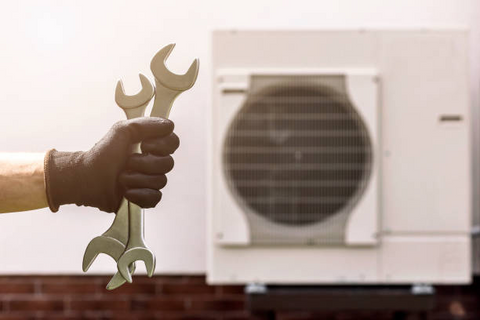In modern, efficient home heating and cooling, heat pumps have emerged as a versatile and energy-saving solution. Whether you're a seasoned homeowner or a novice, mastering the art of maintaining and troubleshooting your heat pump is crucial for ensuring optimal performance. In this comprehensive guide, we'll delve into the intricacies of heat pump care, providing you with actionable insights to keep your system running smoothly.

Understanding Your Heat Pump
Before delving into maintenance, it's imperative to grasp the fundamentals of how your heat pump operates. Essentially, a heat pump extracts heat from the air or ground to regulate your home's temperature. Comprising an outdoor unit (condenser) and an indoor unit (evaporator), this sophisticated system works year-round to keep your home comfortable.
Routine Maintenance for Peak Performance
- Filter Check and Replacement
The heart of your heat pump lies in its filters. Regularly inspect and replace them every 1-3 months, ensuring unhindered airflow. Clogged filters not only compromise efficiency but also strain the entire system, leading to potential breakdowns.
- Coil Cleaning
Both indoor and outdoor coils play pivotal roles in heat exchange. Annually, clean these coils to remove dirt and debris, preventing diminished efficiency. A clean coil ensures optimal heat transfer, enhancing your heat pump's overall efficacy.
- Inspecting Refrigerant Levels
Low refrigerant levels can hamper your heat pump's ability to generate warmth. Periodically check for refrigerant leaks and ensure levels are within the manufacturer's specifications. If in doubt, consult a professional for a thorough evaluation.
Maintenance Tips
Regular Inspections:
Perform regular visual inspections of the heat pump system. Look for any signs of damage, leaks, or unusual noises. Check the outdoor unit for debris, such as leaves, dirt, or snow, and clean as necessary.
Clean or Replace Air Filters:
Dirty or clogged air filters can reduce the efficiency of the heat pump. Clean or replace filters according to the manufacturer's recommendations.
Keep Coils Clean:
Clean the evaporator and condenser coils regularly. Dirty coils can reduce heat exchange efficiency. Use a soft brush or vacuum to remove dirt and debris.
Inspect Ductwork:
Check the ductwork for any leaks or loose connections. Seal any leaks and ensure that the ducts are properly insulated.
Monitor Refrigerant Levels:
Low refrigerant levels can affect the heat pump's efficiency. If you suspect a refrigerant leak, consult a professional technician to identify and fix the issue.
Check Thermostat Settings:
Ensure that the thermostat settings are accurate. Clean the thermostat's interior components and replace the batteries if necessary.
Inspect Outdoor Unit:
Inspect the outdoor unit for any damage or obstructions. Trim vegetation around the unit to maintain proper airflow.
Schedule Professional Maintenance:
Arrange for professional maintenance at least once a year. A qualified technician can inspect and service the system, ensuring it operates efficiently.
Troubleshooting Tips
Check for Error Codes:
Most modern heat pumps have error code displays. Refer to the user manual to interpret error codes and identify specific issues.
No Heating or Cooling:
If the heat pump is not producing heat or cool air, check the thermostat settings and ensure the system is set to the correct mode (heating or cooling).
Inadequate Heating or Cooling:
Inspect and clean the air filters. Low refrigerant levels, faulty valves, or issues with the compressor may also cause inadequate heating or cooling.
Unusual Noises:
Unusual noises such as grinding, squealing, or rattling may indicate a problem. Inspect the unit for loose or damaged parts and consult a professional if needed.
Icing or Frosting:
The icing on the outdoor unit or excessive frosting on the indoor coil may be a sign of refrigerant issues or airflow problems. Consult a technician to diagnose and address the problem.
Short Cycling:
If the heat pump is turning on and off frequently, it may be short cycling. This could be due to issues with the thermostat, sensors, or refrigerant levels.
Tripped Breakers or Fuses:
Check the electrical panel for tripped breakers or blown fuses. Reset the breaker or replace the fuse if necessary. If the issue persists, consult a professional.
Consult the User Manual:
Always refer to the user manual for specific troubleshooting guidance provided by the manufacturer.
If you encounter problems that you cannot resolve, it's crucial to contact a qualified HVAC professional to diagnose and repair the heat pump system. Regular maintenance and prompt troubleshooting can extend the lifespan of your heat pump and ensure efficient operation.

